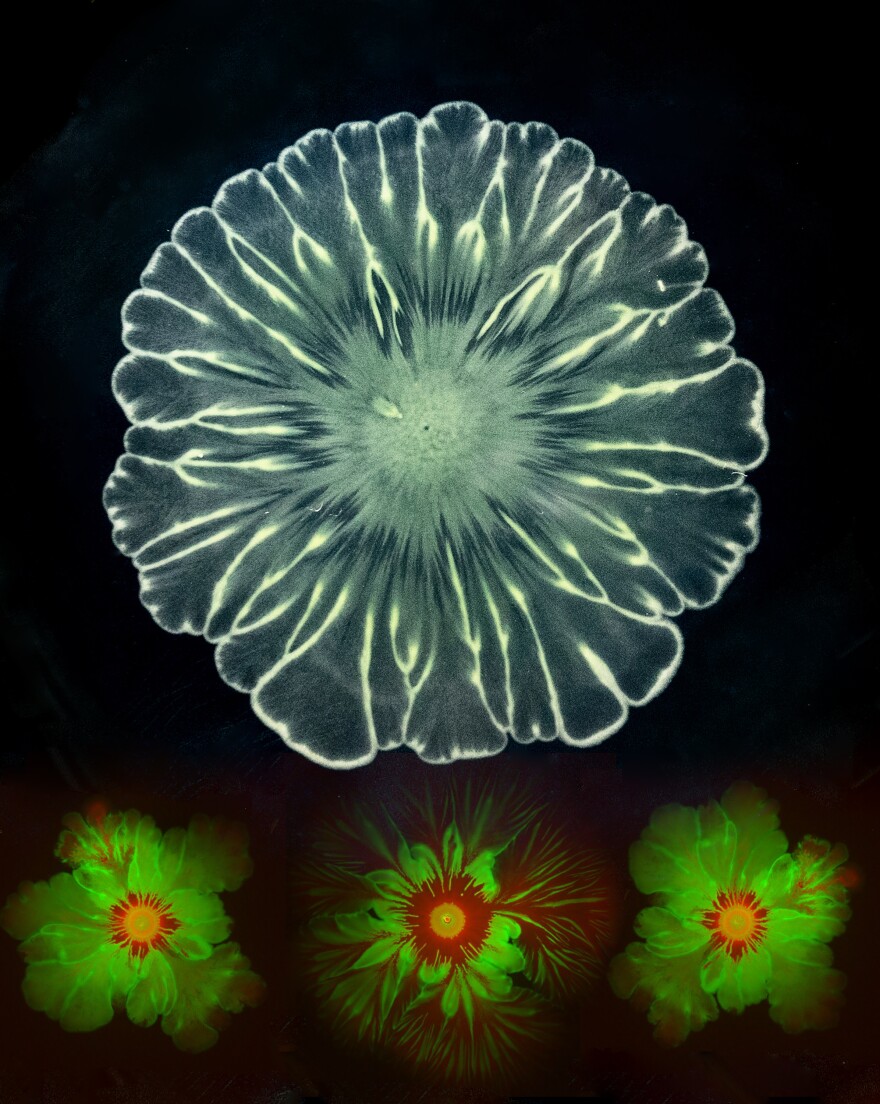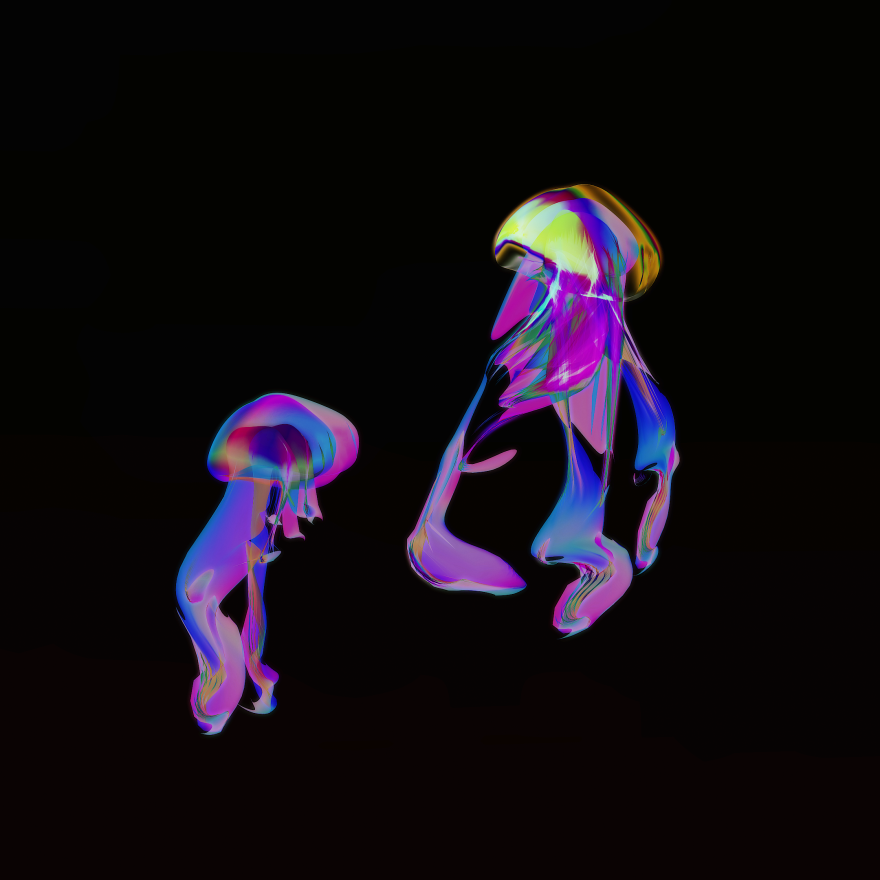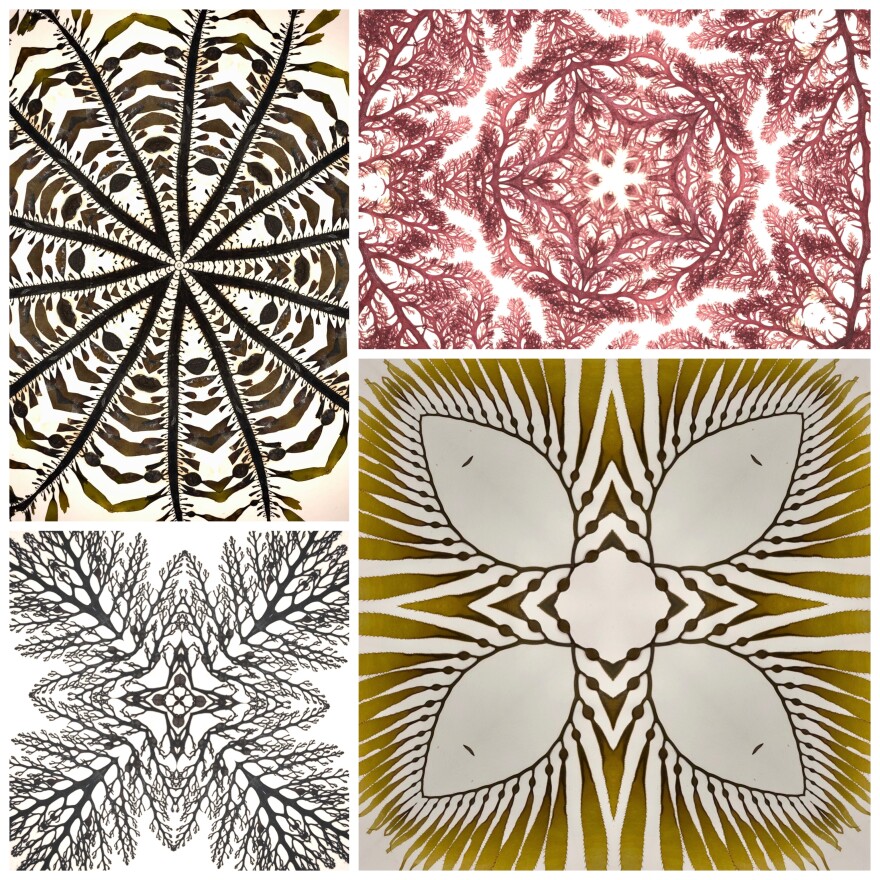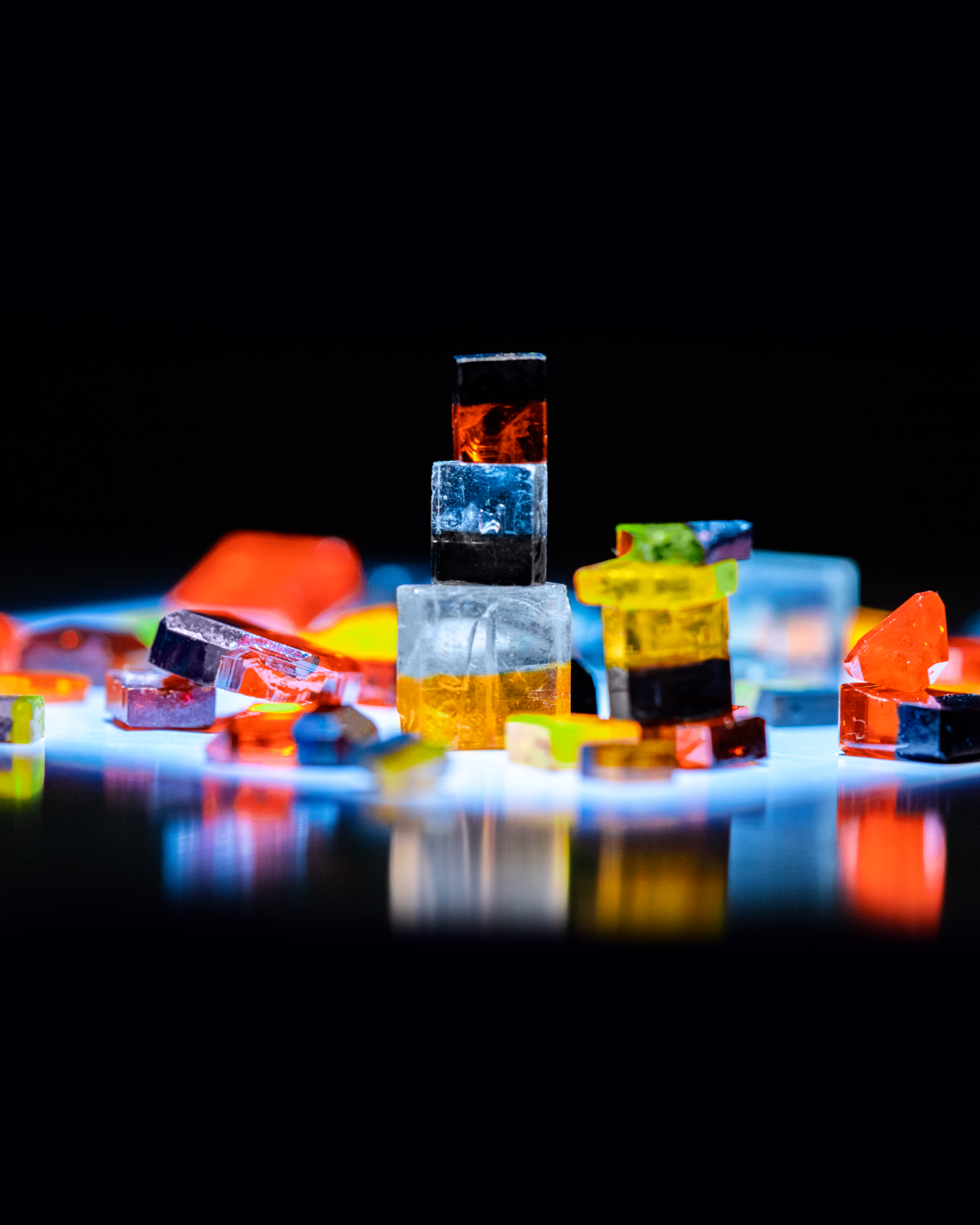The UC San Diego Library is partnering with San Diego Natural History Museum on an exhibit celebrating the intersection of art and science.
The "Art of Science" contest was created to highlight the beauty that can emerge during scientific research at UC San Diego and beyond.
Metadata librarian Abigail Pennington was inspired to create the contest by a collection in the UC San Diego Library repository called cell image library.

"These are images that come from the center for microscopy on campus," Pennington said. "There are tens of thousands of them, and so we've been ingesting them over time. And once they're in the repository, I review all the images, and I get to discover the amazing things that go on. And they are beautiful. I mean, at first, you don't know what you're looking at, and then you read that it's some bacterium with a certain type of dye injected into it. Or you see something that can be challenging like this is a breast cancer cell. But what first caught your eye is that this is beautiful."
As a metadata librarian, Pennington works with researchers and research data. She, along with a small team of curators, is responsible for meeting with researchers and then figuring out how to organize all the data so it will be accessible to other researchers and be reusable.

This year Pennington is excited to bring the "Art of Science" to a wider audience through a new partnership with San Diego Natural History Museum (The Nat).
"I think this is a great partnership because they do this every day," Pennington said. "They take science and they make it understandable, accessible to the average visitor. And that's what we want to do, is provide opportunities for researchers to explain their research in a way that viewers can understand it. Since these are beautiful, I think they capture our attention and they make us want to dig a little bit deeper and say, 'Hey, what's going on with this image? What's the science behind this?' And I think that's exciting. I think this is a time when we want researchers to be able to explain their work in a way that we can understand because there are some heavy issues out there right now with climate change and the pandemic, and how can we learn from these researchers and what they're doing and see perhaps what's on the horizon?"
For the second year, the Art of Science put out a call for submissions from UC San Diego students, researchers and affiliates. Entrants were asked to submit images or graphics that tell a story about their research, along with a caption that explains their work in an engaging and accessible way for non-scientists. Then a panel of judges composed of UC San Diego faculty and campus and community administrators selected the winners.
Adi Khen, a Ph.D. candidate at the Scripps Institution of Oceanography at UC San Diego, studies corals and algae and how they are responding to heat stress associated with global climate change in the long term. She also helps teach a phycology (study of seaweed) course.
She had a winning entry in last year's contest.
"I'm very used to thinking about the connection between art and science because although I'm a scientist by training, I'm also an artist on the side," Khen said. "I'm a self-taught scientific illustrator, and I make a lot of digital illustrations that are used as conceptual diagrams and infographics for other educational resources. And so I'm a very strong proponent of how art and science are interconnected."
This year she submitted another winning entry called Seaweed Kaleidoscopes.

"I'm really thrilled that seaweeds are getting this recognition," Khen said. "They're usually overlooked or under-appreciated, but personally, they're one of my passions. I think they're not only beautiful but really important. They're a food source to herbivores like fish and urchins, and then they can also be used by humans for aquaculture, biofuels, pharmaceuticals, even climate mitigation. Yet they're often under-appreciated or overlooked. So I love seaweeds, and I'm glad that we can showcase their beauty, but also in that way convey their value."
Khen explained her process for creating the entry: "It's a digital photo edit of different commonly found seaweeds in San Diego. To create this piece, I collected seaweeds that are found here locally and essentially mounted them on sheets of thick paper, almost like watercolor paper, placing the seaweed and then wax paper on top and then surrounding that with blotting paper or anything to absorb the moisture, like newspaper. And that gets sandwiched in between cardboard and placed between these wooden boards, over which you can place heavy objects like textbooks to flatten them. And then once the seaweeds were dry, I photographed them and used photoshop to digitally add a kaleidoscope effect."
The winning works are now on display through Oct. 24 at the UC San Diego Library WongAvery Breezeway and on the first floor of the San Diego Natural History Museum in Balboa Park.







